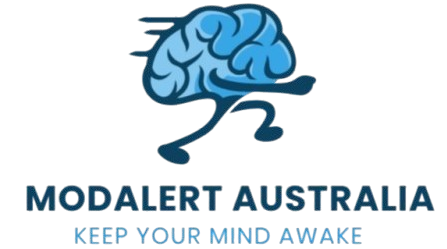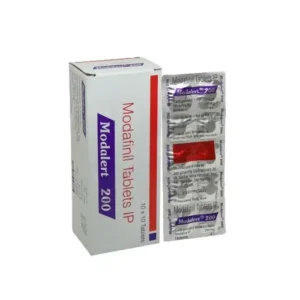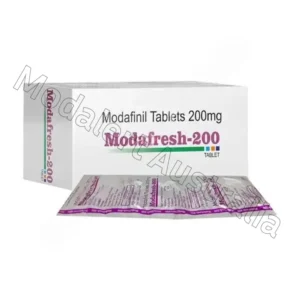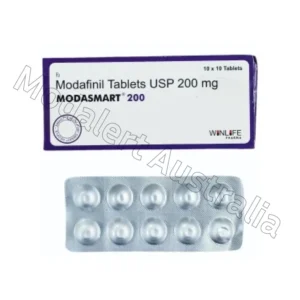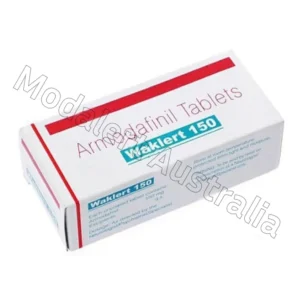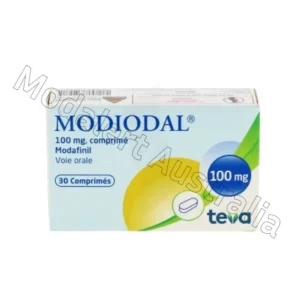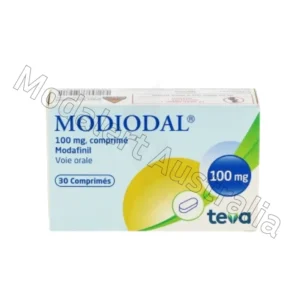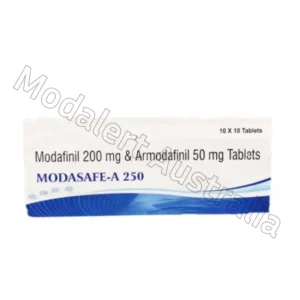How long does it take for Modafinil to work for Depression?
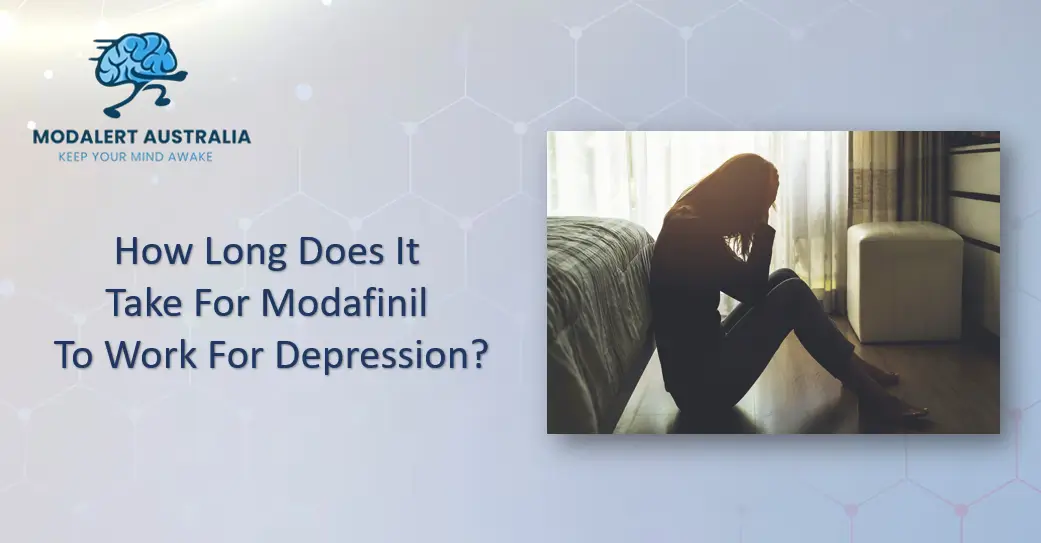
Introduction: Can Modafinil Help with Depression?
Modafinil is a wakefulness-promoting drug primarily prescribed for narcolepsy, shift work sleep disorder, and obstructive sleep apnea. However, many people take it without a prescription for its cognitive enhancement results, including improved motivation, focus, clarity.
However, can Modafinil aid in treating depression? Specific studies and anecdotal evidence have suggested it can relieve symptoms of lack of motivation, fatigue, and headaches, all of which are typical of depression-related disorders.
The most important question is: How long does it take for Modafinil to work for depression? In contrast to traditional antidepressants, which could take a few weeks to manifest the effects, Modafinil might act faster. Learn more about how it operates when you can anticipate outcomes and if it’s an option worth considering.
Know about What is the Use of Modalert 200 Tablet?
Understanding Modafinil’s Mechanism: Why Might It Help Depression?
Modafinil isn’t like other SSRIs (or SNRIs) (e.g., Prozac, Zoloft). It affects the most important neurotransmitters, such as:
- Dopamine: Enhances motivation, joy, and focus.
- Norepinephrine: Improves alertness and increases energy.
- Histamine: It helps to increase your wakefulness.
Contrary to traditional antidepressants that gradually increase the levels of serotonin in the brain, Modafinil provides a quicker stimulating effect similar to stimulants. There is evidence that suggests it can assist in the treatment of depression with other drugs.
Key Studies Supporting Modafinil for Depression:
- A study published in 2000 that was published in The Journal of Clinical Psychiatry revealed Modafinil increased fatigue and improved depressive symptoms among bipolar patients.
- A meta-analysis from 2016 suggested that it is effective in addition to therapy treatments for major depression (MDD).
But there’s no FDA approval for treating depression. Therefore, further research is required.
The Timeline: When Can You Expect Modafinil to Kick In?
First Dose (1–2 Hours)
- The users often notice a greater concentration and alertness within the first 1-2 hours.
- The improvement in mood may appear less evident at first, with more energy than the direct effects of antidepressants.
Short-Term Use (Days 1–7)
- Many report improved motivation, increased energy, less fatigue, and more focused thinking after a few days.
- Contrary to SSRIs and SSRIs, which can take weeks to show their effects, Modafinil’s effect is noticeable quickly.
Long-Term Use (Weeks+)
- Certain users have sustained improvement in their mood, particularly if they are suffering from anxiety or ADHD-like symptoms.
- In the meantime, tolerance could grow, and effectiveness decreases with time.
Comparison to Traditional Antidepressants
- The SSRIs/SNRIs take 4-6 weeks to show maximum effects.
- Modafinil: Instant energy boost and mental health benefits during the day.
Factors That Influence How Fast Modafinil Works
Dosage (100mg vs. 200mg)
- 100mg – Milder effects, fewer side effects.
- 200 mg – More intense stimulation; however, there is a higher chance of anxiety/jitters.
Recommended products
-
Modalert 200 Mg (Modafinil)
$115.00 $550.00Price range: $115.00 through $550.00 -
Modafresh 200 Mg (Modafinil)
$70.00 $245.00Price range: $70.00 through $245.00 -
Modasmart 200 Mg (Modafinil)
$155.00 $1,115.00Price range: $155.00 through $1,115.00
Individual Metabolism
- Rapid metabolizers experience effects rapidly (1-2 minutes).
- The slower metabolizers might require greater doses or longer.
Severity of Depression
- It is best used for depression triggered by fatigue or as an adjunct therapy.
- It is not as effective in severe, melancholic depression.
Combination with Other Treatments
- It is more effective when combined with exercise, therapy and other antidepressants.
- Do not mix stimulants (e.g. caffeine, coffee, ADHD medication) to avoid anxiety.
Real User Experiences: What Do People Say?
Positive Experiences:
“Within an hour, I felt like a fog lifted. My depression wasn’t gone, but I could finally think clearly.”
“It gave me the energy to get out of bed and do things—something SSRIs never did.”
Mixed/Negative Experiences:
“It helped with focus but made my anxiety worse.”
“After a few weeks, the effects faded, and I needed a higher dose.”
Key Takeaway:
The results vary. Some people experience immediate relief experience immediate relief, while some do not see any benefits.
Potential Downsides: Is Modafinil Reliable for Depression?
Side Effects:
- Anxiety, insomnia, headaches, or crashes.
- It can worsen existing anxiety disorders.
Risk of Dependence & Tolerance
- They are not as addictive as amphetamines, but tolerance may increase.
- Certain users require higher dosages, which can lead to dependence.
Why Isn’t It FDA-Approved for Depression?
- Limited large-scale studies.
- It is best to treat fatigue-related symptoms, but not for the core depression symptoms.
Alternatives if Modafinil Doesn’t Work Fast Enough
Other Off-Label Options:
- Bupropion (Wellbutrin) – Similar dopamine effects, FDA-approved for depression.
- Ketamine (or Esketamine) – The drug is rapid-acting and can be used to treat depression.
Lifestyle Tweaks:
- Exercise – Enhances neuroplasticity and endorphins.
- Sunlight & Vitamin D – Aids in regulating mood.
- Sleep Hygiene – Poor sleep worsens depression.
When to Revisit Traditional Treatments:
If Modafinil does not help, SSRIs, therapy, or TMS (transcranial magnetic stimulation) could be better choices.
Key Takeaways: Should You Try Modafinil for Depression?
Pros:
- Performs better quickly than SSRIs (hours up to days. weeks).
- It helps with motivation, fatigue, and mental fog.
Cons:
- Not FDA-approved for depression.
- It can cause insomnia, anxiety and even issues with tolerance.
Final Verdict:
Modafinil could help some types of depression, including those who have ADHD or fatigue symptoms. It’s, however, not a cure-all. Make sure to consult with a doctor before deciding to self-medicate. Self-medicating is a risk. It can be a short-term boost. For others, it’s a part of an introduction: Can Modafinil Help with Depression?
Modafinil is a wakefulness-promoting drug primarily prescribed for narcolepsy, shift work sleep disorder, and obstructive sleep apnea. However, many people take it without a prescription for its cognitive enhancement results, including improved motivation, focus and clarity.
However, can Modafinil aid in treating depression? Specific studies and anecdotal evidence have suggested it can relieve symptoms of lack of motivation, fatigue and headaches, all of which are typical of depression-related disorders.
The most important question is: How long does it take for Modafinil to work for depression? In contrast to traditional antidepressants, which could take a few weeks to manifest the effects, Modafinil might act faster. Learn more about how it operates when you can anticipate outcomes and if it’s an option worth considering.
Understanding Modafinil’s Mechanism: Why Might It Help Depression?
Modafinil isn’t like other SSRIs (or SNRIs) (e.g., Prozac, Zoloft). It affects the most important neurotransmitters, such as:
- Dopamine: Enhances motivation, joy, and focus.
- Norepinephrine: Improves alertness and increases energy.
- Histamine: It helps to increase your wakefulness.
Contrary to traditional antidepressants that gradually increase the levels of serotonin in the brain, Modafinil provides a quicker stimulating effect similar to stimulants. There is evidence that suggests it can assist in the treatment of depression with other drugs.
Key Studies Supporting Modafinil for Depression:
- A study published in 2000 that was published in The Journal of Clinical Psychiatry revealed Modafinil increased fatigue and improved depressive symptoms among bipolar patients.
- A meta-analysis from 2016 suggested that it is effective in addition to therapy treatments for major depression (MDD).
But there’s no FDA approval for treating depression. Therefore, further research is required.
The Timeline: When Can You Expect Modafinil to Kick In?
First Dose (1–2 Hours)
- The users often notice a greater concentration and alertness within the first 1-2 hours.
- The improvement in mood may appear less evident at first, with more energy than the direct effects of antidepressants.
Short-Term Use (Days 1–7)
- Many report improved motivation, increased energy, less fatigue, and more focused thinking after a few days.
- Contrary to SSRIs and SSRIs, which can take weeks to show their effects, Modafinil’s effect is noticeable quickly.
Long-Term Use (Weeks+)
- Certain users have sustained improvement in their mood, particularly if they are suffering from anxiety or ADHD-like symptoms.
- In the meantime, tolerance could grow, and effectiveness decreases with time.
Comparison to Traditional Antidepressants
- The SSRIs/SNRIs take 4-6 weeks to show maximum effects.
- Modafinil: Instant energy boost and mental health benefits during the day.
Factors That Influence How Fast Modafinil Works
Dosage (100mg vs. 200mg)
- 100mg – Milder effects, fewer side effects.
- 200 mg – More intense stimulation; however, there is a higher chance of anxiety/jitters.
Individual Metabolism
- Rapid metabolizers experience effects rapidly (1-2 minutes).
- The slower metabolizers might require greater doses or longer.
Severity of Depression
- It is best used for depression triggered by fatigue or as an adjunct therapy.
- It is not as effective in severe, melancholic depression.
Combination with Other Treatments
- It is more effective when combined with exercise, therapy and other antidepressants.
- Do not mix stimulants (e.g. caffeine, coffee, ADHD medication) to avoid anxiety.
Real User Experiences: What Do People Say?
Positive Experiences:
“Within an hour, I felt like a fog lifted. My depression wasn’t gone, but I could finally think clearly.”
“It gave me the energy to get out of bed and do things—something SSRIs never did.”
Mixed/Negative Experiences:
“It helped with focus but made my anxiety worse.”
“After a few weeks, the effects faded, and I needed a higher dose.”
Key Takeaway:
The results vary. Some people experience immediate relief experience immediate relief, while some do not see any benefits.
Potential Downsides: Is Modafinil Reliable for Depression?
Side Effects:
- Anxiety, insomnia, headaches, or crashes.
- It can worsen existing anxiety disorders.
Risk of Dependence & Tolerance
- They are not as addictive as amphetamines, but tolerance may increase.
- Certain users require higher dosages, which can lead to dependence.
Why Isn’t It FDA-Approved for Depression?
- Limited large-scale studies.
- It is best to treat fatigue-related symptoms, but not for the core depression symptoms.
Alternatives if Modafinil Doesn’t Work Fast Enough
Other Off-Label Options:
- Bupropion (Wellbutrin) – Similar dopamine effects, FDA-approved for depression.
- Ketamine (or Esketamine) – The drug is rapid-acting and can be used to treat depression.
Lifestyle Tweaks:
- Exercise – Enhances neuroplasticity and endorphins.
- Sunlight & Vitamin D – Aids in regulating mood.
- Sleep Hygiene – Poor sleep worsens depression.
When to Revisit Traditional Treatments:
If Modafinil does not help, SSRIs, therapy, or TMS (transcranial magnetic stimulation) could be better choices.
Key Takeaways: Should You Try Modafinil for Depression?
Pros:
- Performs better quickly than SSRIs (hours up to days. weeks).
- It helps with motivation, fatigue and mental fog.
Cons:
- Not FDA-approved for depression.
- It can cause insomnia, anxiety and even issues with tolerance.
Final Verdict:
Modafinil could help some types of depression, including those who have ADHD or fatigue symptoms. It’s, however, not a cure-all. Make sure to consult with a doctor before deciding to self-medicate. Self-medicating is a risk. It can be a short-term boost. For others, it’s a part of a long-term plan.
